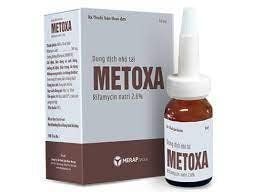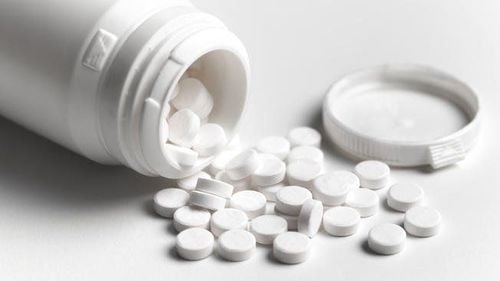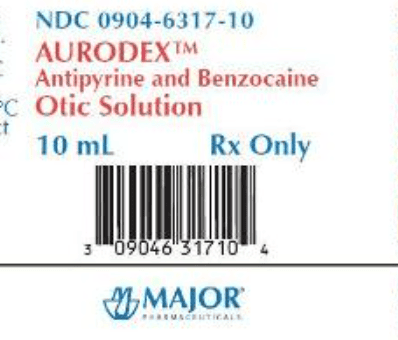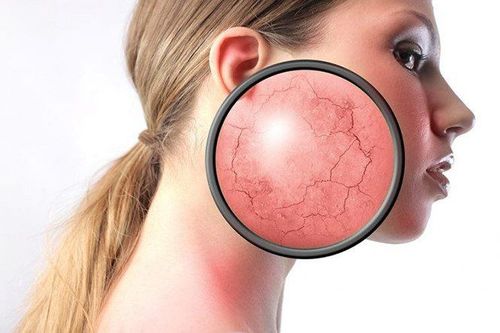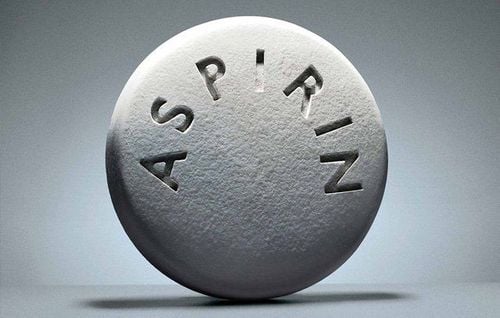This is an automatically translated article.
Antipyrine is a drug with analgesic, anti-inflammatory and antipyretic effects. The drug is often used alone and in combination with some other drugs to increase the therapeutic effect. Here are some of the works and uses of Antipyrine.
1. Uses of Antipyrine
Antipyrine also known as Phenazone, this is a pyrazolone derivative with analgesic and anti-inflammatory properties, increasing pain threshold, anti-inflammatory analgesic by inhibiting the enzymes cyclooxygenase, COX-1, COX-2, COX -3 reduces the synthesis of prostaglandins, which are involved in the inflammatory response.
Antipyrine belongs to the NSAIDS group of anti-inflammatory drugs, has anti-inflammatory, analgesic and antipyretic effects.
Antipyrine is made in the form of 4% ear drops, 0.75% skin ointment. Usually, Antipyrine is often combined with other drugs such as antipyrine/benzocaine in combination with the local anesthetic benzocaine to increase the effectiveness of local analgesia.
Antipyrine is indicated in the following cases: Local symptomatic treatment and relief of pain due to otitis media causing pain, swelling, inflammation and without perforation of the tympanic membrane, including
Acute congestive otitis count. Inflammation of the ear with blisters caused by the flu virus. Post-traumatic otitis media. Treatment in the use of systemic antibiotics to treat ear infections. Support the treatment of superficial and small burns. Topical application helps treat cases of nosebleeds.
2. Contraindications of Antipyrine
Antipyrine should not be used in the following cases:
People with a history of hypersensitivity to the active ingredients of the drug or any of the excipients in the drug. Perforated eardrum due to acute, chronic ear infection or trauma. Because the use of drugs can be toxic to the ear.
3. Usage and dosage of Antipyrine
How to use Antipyrine as follows:
Avoid exposing the patient to the cold solution, you should warm the solution in the palm of your hand before use. Lie down or lie on your head so that the affected ear is facing up. Gently pull the earlobe up and back for adults; down and back for children to help straighten the ear canal, so that the medicine can penetrate the eardrum more easily. Put the medicine in the ear canal, then let the ear face up for about 5 minutes; however, for young children or those who cannot lie still for 5 minutes, it is necessary to keep the ears on their back for at least 1 minute. Moisten cotton with a few drops of the medicine, place it in the ear for 5 to 10 minutes to prevent the medicine from coming out. Do not wash the dropper after use, just wipe it with a clean tissue and then close the container tightly. Dosage:
Adults: Put 4 drops each time and 2 to 3 times a day into the inflamed ear canal, when using gently press the elastic part of the dropper. When using, the patient should avoid letting the tip of the dropper touch the ear canal, because there is a risk of infection. Duration of drug treatment should not exceed 7 days. Children: No dose adjustment is necessary as the drug is only acting locally. Pregnancy and breast-feeding: No dose adjustment is required.
4. Side effects when taking Antipyrine drugs
This is a topical drug, although rarely causes side effects, but in rare cases can cause the following side effects:
Systemic allergies such as eczema, urticaria, erythema ; Sneezing, runny nose, stuffy nose, burning sensation. Local allergic reactions such as irritation, increased pressure on the ear canal, congestion of the ear canal. If you see any unusual signs while taking the drug, immediately notify your doctor for advice and treatment.
5. Notes when using Antipyrine
Before treatment with Antipyrine, the patient should have an otoscopy to check for a perforated eardrum or not? If the eardrum is perforated, the drug will enter the middle ear and come into contact with the structure of the middle ear, causing unwanted effects and potentially toxic effects to the ear. In addition, the patient should inform the doctor if there is a previous allergic reaction to the drug or other ingredients. During treatment: If you experience ear discharge, pain or ringing in your ears, dizziness, or bleeding in your ears, this could be a sign of a perforated eardrum, the patient should stop using this ear drop and visit the doctor. Check to see if there's a problem. If symptoms of ear pain, local inflammation do not improve within 7 days or symptoms worsen significantly at any time, the patient should be re-evaluated therapy and seen with a doctor. doctor for appropriate medication. If the drug is combined with Lidocaine, caution should be exercised in patients prone to hypermethemoglobinemia such as neonates < 3 months of age, patients with Haemoglobinopathies, patients with Glucose6-phosphate dehydrogenase (G6PD) deficiency. If, after taking the drug for a short time, about 2 hours, the patient experiences headaches, shortness of breath, pale or gray skin, this is a sign of methemoglobinemia. In this case the patient should stop taking the drug and seek medical advice immediately. Use with caution in patients with G6PD deficiency because phenazone-containing drugs can cause acute hemolysis. For athletes, care should be taken when using drugs containing phenazone, because the drug contains a substance that can cause a positive test for stimulants. This product is for ear or external use only, not for eyes, nose and absolutely do not swallow, discontinue use immediately if sensitization or irritation occurs. Take care when using to avoid contaminating the tip of the small tube. Do not let the tip of the dropper come into contact with the earlobe and touch it with your fingers. Pregnant and lactating women can use the ear drops if necessary. However, it is important to use the correct dose and according to the doctor's prescription. For topical or nasal ointments are not recommended for use during pregnancy and women of reproductive age. Overdose usually does not occur with ear drops, but with the topical form there is a risk of overdose and serious reactions. Patients need to go to the medical facility immediately for timely treatment. Besides, take precautions by taking the correct dose as prescribed by your doctor. Antipyrine is used topically, so the drug interactions and other food interactions have not been fully studied. Therefore, when taking drugs, especially similar topical drugs at the same time, you should inform your doctor. Store the medicine in a cool, dry place, away from direct sunlight. Keep out of reach of children and pets. Antipyrine is an anti-inflammatory drug and is often used in combination with other medications to reduce pain and inflammation. However, this is only a drug to treat symptoms, not a substitute for drugs to treat the cause, patients need to be careful when using it and do not use it for a long time. To ensure the effectiveness of treatment and avoid unwanted side effects, patients need to strictly follow the instructions of the doctor, professional pharmacist.
Follow Vinmec International General Hospital website to get more health, nutrition and beauty information to protect the health of yourself and your loved ones in your family.
Please dial HOTLINE for more information or register for an appointment HERE. Download MyVinmec app to make appointments faster and to manage your bookings easily.
Reference source: drugs.com




